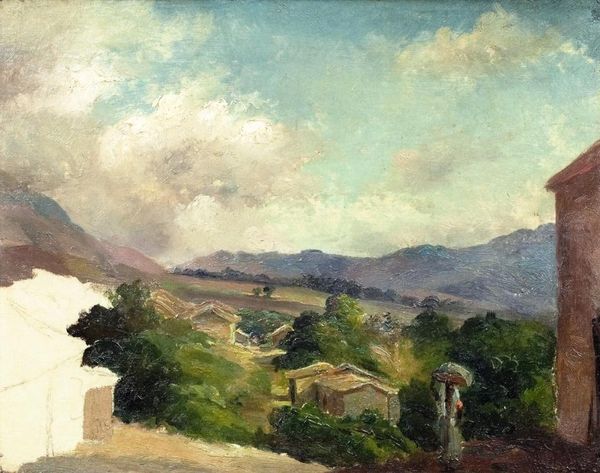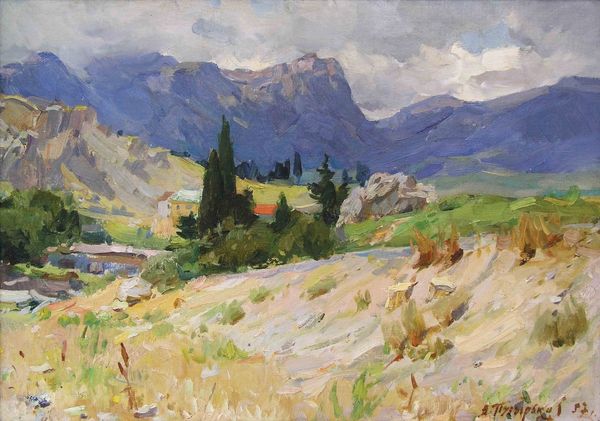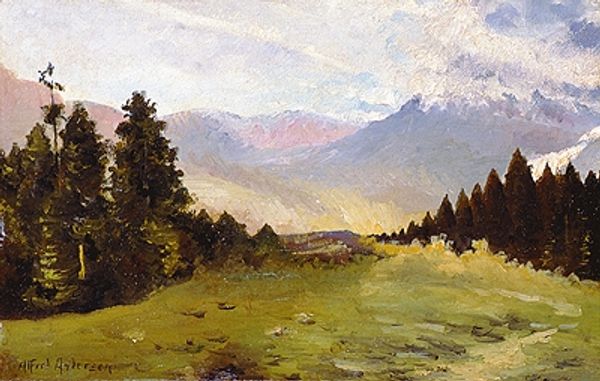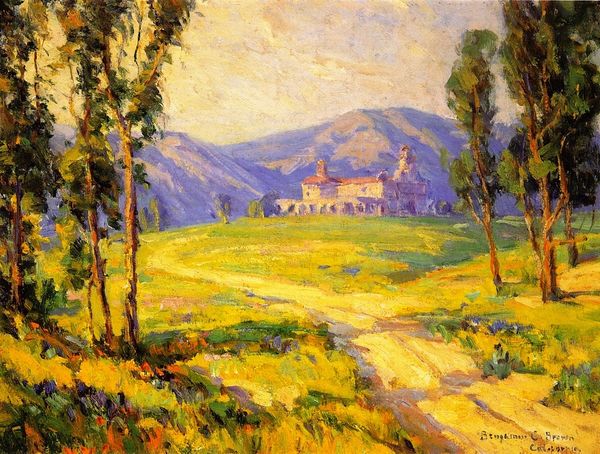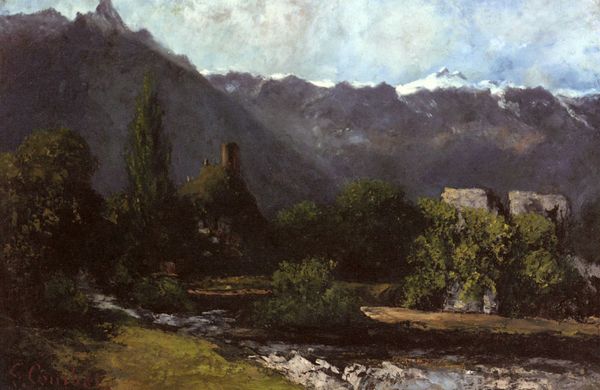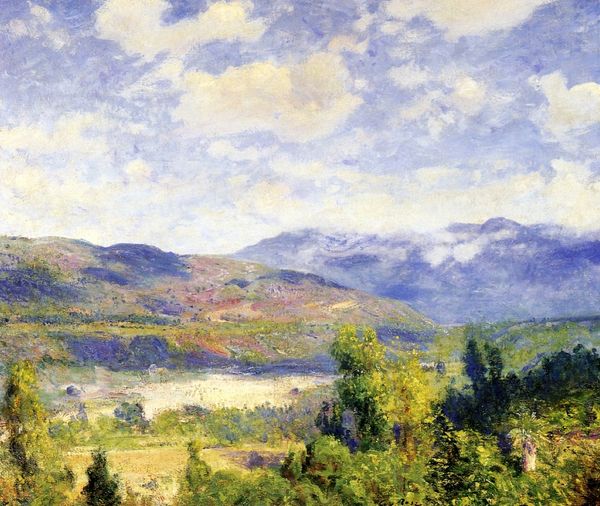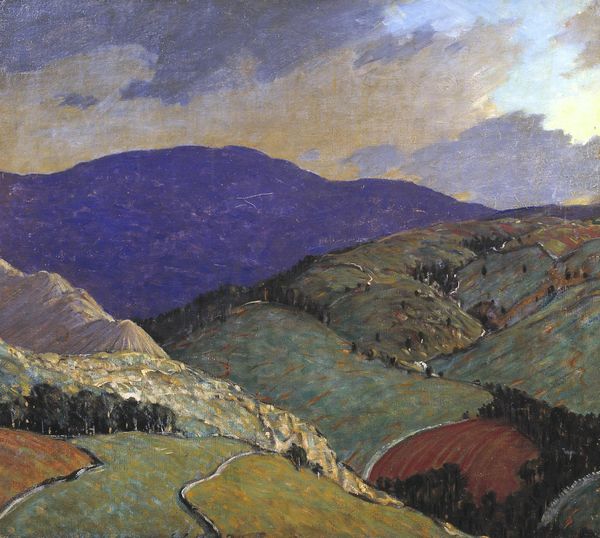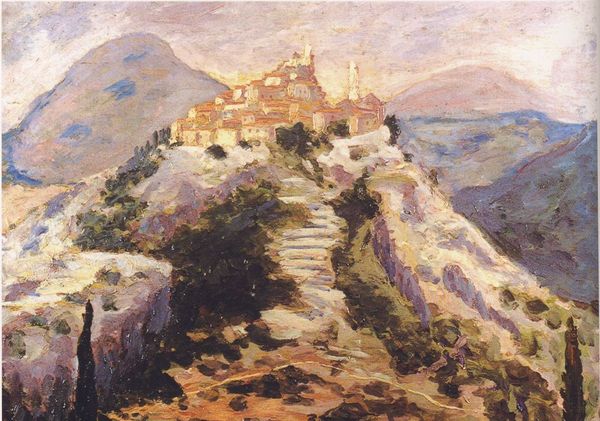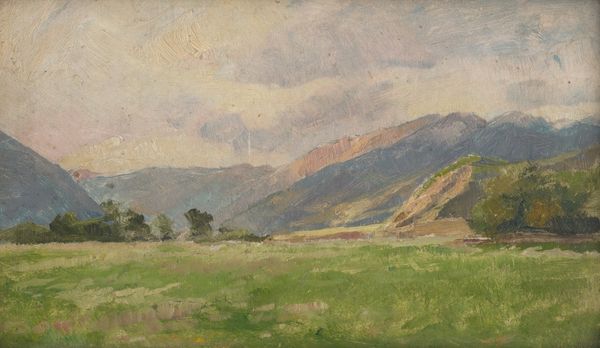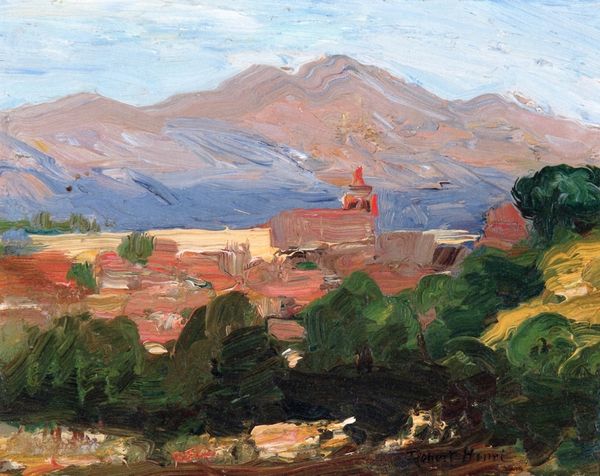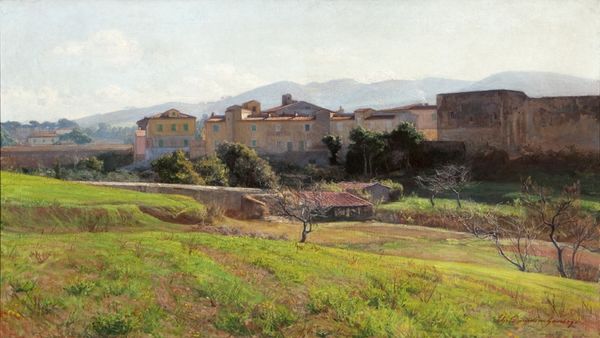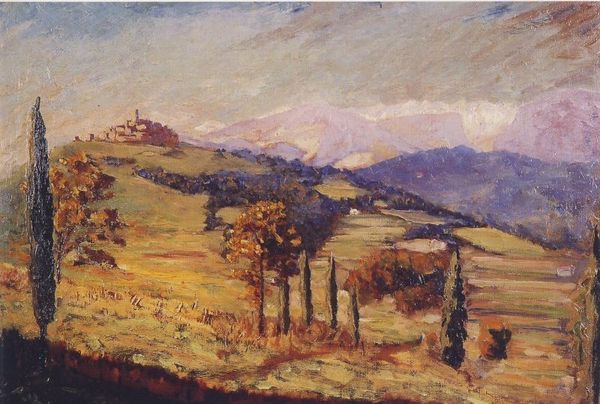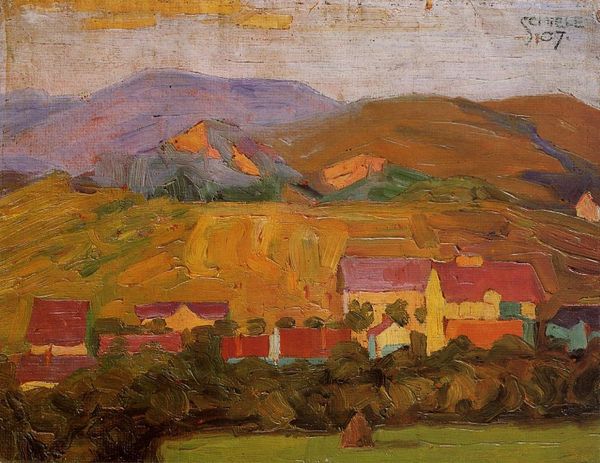
Copyright: Public domain
Curator: My first impression is the sheer romance of the scene. It feels bathed in a kind of hopeful melancholy, like a memory shimmering at the edge of a dream. Editor: We’re looking at "Sunrise, Mission at Pala near San Luis Rey," an oil on canvas completed around 1898 by Benjamin Brown. It’s an exceptional example of California Impressionism, depicting the historic Mission San Antonio de Pala, a crucial site in the colonial history of Southern California. Curator: Absolutely, and you can feel that history woven into the landscape, but almost…sublimated by the light. The palette, those muted golds and purples, feels almost like a whispered prayer. It's as though the land itself is exhaling the past. Editor: Indeed. But we can’t ignore the problematic layers beneath the picturesque. Missions were instruments of forced conversion and cultural erasure, sites of profound violence against indigenous populations. So while Brown’s painting is undeniably beautiful, its beauty obscures a complex and painful history. The light isn’t just innocent; it carries a burden of colonial legacy. Curator: It’s true, the brushstrokes are so loose and inviting, yet when you factor in the missions' function within the imperial agenda it’s hard not to wrestle with what feels like visual exploitation...Like gilding a bitter pill. Editor: Brown's decision to focus on the landscape, rather than the people affected by the mission, speaks volumes, too, reinforcing the erasure. It transforms a place of exploitation into a scenic vista, devoid of its historical actors and injustices. What looks at first to be a romantic, sweeping portrayal of an untouched and pristine mission and valley is an oversimplified reality that we need to examine and interpret. Curator: So, do you think there is a place for artwork like this today, in an age where historical narratives must also highlight trauma? Is it even ethical to create paintings that intentionally distract from tragedy? Editor: That is precisely why its presence and recognition are of utmost importance today! This and every form of visual art, that depicts tragedy and oppression, compels conversation. It fosters awareness, enabling the observer to form an interpretation that could lead to an open acknowledgment and recognition of these social injustices. Curator: Hmmm, well, there you have it, maybe it's less about guilt, and more about active observation. It calls for an ongoing discussion between truth, light, darkness and legacy. Thank you. Editor: And thank you.
Comments
No comments
Be the first to comment and join the conversation on the ultimate creative platform.
